DEIM模型训练自己的数据集记录
1、项目拉取,预训练模型下载
github: https://github.com/Intellindust-AI-Lab/DEIM
预训练模型选择:根据需要选择基于D-FINE或RT-DERT的DEIM模型,下面一定要修改、使用对应的模型配置文件,比如下载deim-d-fine-s模型,步骤3就要修改数据配置文件dfine-hgnetv2-s-coco.yml

2、配置环境
我的习惯:先创建一个虚拟环境,安装对应cuda 版本的pytorch-gpu(pytorch版本参考requirement.txt文件中要求版本),再安装其他依赖
conda create -n deim python=3.11.9
conda activate deim
pip install -r requirements.txt (如果单独安装了pytorch,需要删除文件中的torch相关)
3、自定义数据
1)将自己的数据转换成要求的标注格式
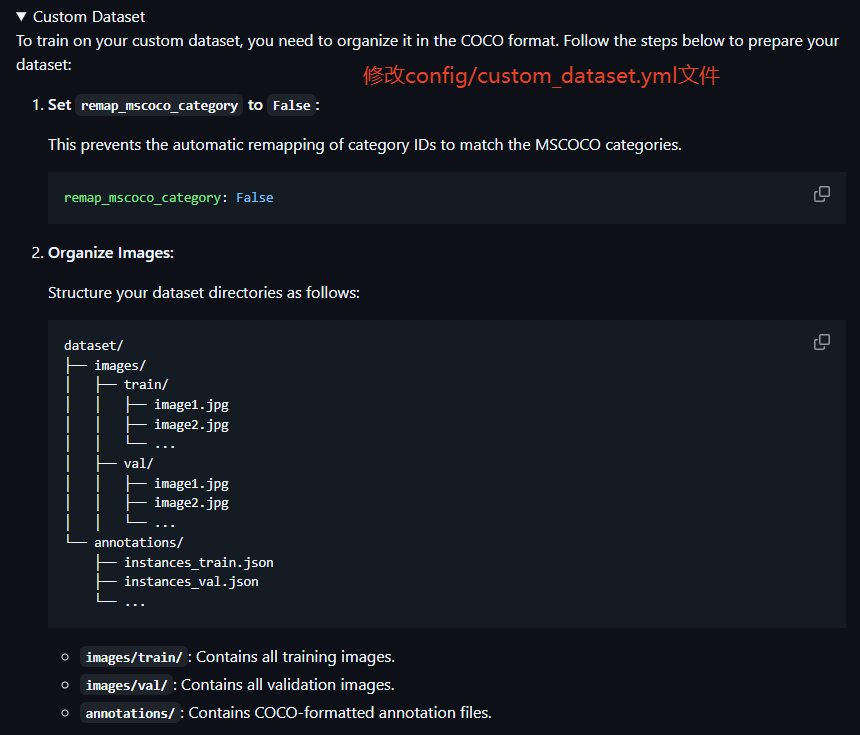 我的数据标注格式是yolo格式(每个图片对应一个同名的txt文件),下面是yolo转换成coco格式的脚本:
我的数据标注格式是yolo格式(每个图片对应一个同名的txt文件),下面是yolo转换成coco格式的脚本:
# -*- coding:utf-8 -*-
import os
import json
from tqdm import tqdm
import cv2
# 类别名
CLASS_LIST = ['B1', 'B2', 'B3', 'A1', 'A2', 'A3', 'A4', 'A5', 'A6', 'A7', 'A8', 'A9', 'A10', 'A11']
def yolo_to_coco(image_dir, txt_dir, output_json_path):
images_dir = os.path.join(image_dir)
labels_dir = os.path.join(txt_dir)
if not os.path.exists(images_dir) or not os.path.exists(labels_dir):
raise FileNotFoundError("images or labels not exist")
categories = [{"id": i, "name": name} for i, name in enumerate(CLASS_LIST)]
coco_data = {
"images": [],
"annotations": [],
"categories": categories
}
image_id = 1
annotation_id = 1
loss_label_num = 0
class_dict = {}
for i in range(len(CLASS_LIST)):
class_dict[i] = 0
for image_name in tqdm(os.listdir(images_dir)):
if not image_name.endswith(('.jpg', '.png', '.jpeg')):
print(f"{image_name} not endwith jpg or png")
continue
image_path = os.path.join(images_dir, image_name)
image = cv2.imread(image_path)
height, width, _ = image.shape
coco_data["images"].append({
"id": image_id,
"file_name": image_name,
"width": width,
"height": height
})
label_name = os.path.splitext(image_name)[0] + '.txt'
label_path = os.path.join(labels_dir, label_name)
if not os.path.exists(label_path):
loss_label_num += 1
image_id += 1
print(f"{image_name} not label")
continue
with open(label_path, 'r') as f:
lines = f.readlines()
for line in lines:
parts = line.strip().split()
if len(parts) != 5:
continue
class_id, x_center, y_center, bbox_width, bbox_height = map(float, parts)
class_id = int(class_id)
# new_class_id = CLASS_MAPPING.get(int(class_id), None)
if class_id is None:
continue
x_center *= width
y_center *= height
bbox_width *= width
bbox_height *= height
x_min = max(x_center - (bbox_width / 2),0)
y_min = max(y_center - (bbox_height / 2),0)
area = bbox_width * bbox_height
coco_data["annotations"].append({
"id": annotation_id,
"image_id": image_id,
"category_id": class_id,
"bbox": [x_min, y_min, bbox_width, bbox_height],
"area": area,
"iscrowd": 0
})
class_dict[class_id] += 1
annotation_id += 1
image_id += 1
with open(output_json_path, 'w') as f:
json.dump(coco_data, f, indent=4)
print(f"end saved to {output_json_path},loss label num:{loss_label_num}")
print(class_dict)
def main(image_dir, txt_dir, output_json_dir):
os.makedirs(output_json_dir, exist_ok=True)
sub_dirs = os.listdir(txt_dir)
for subfolder in sub_dirs:
yolo_image_dir = os.path.join(image_dir, subfolder)
yolo_txt_dir = os.path.join(txt_dir, subfolder)
output_json = os.path.join(output_json_dir, f"{subfolder}.json")
yolo_to_coco(yolo_image_dir, yolo_txt_dir, output_json)
if __name__ == "__main__":
image_dir = r".\00labeled\zhenzhi20241130\images"
txt_dir = r".\00labeled\zhenzhi20241130\labels"
output_dir = r".\00labeled\zhenzhi20241130\annotations_14class"
main(image_dir, txt_dir, output_dir)
2)修改数据配置文件(数据路径、标签类别,模型使用的数据配置文件路径)
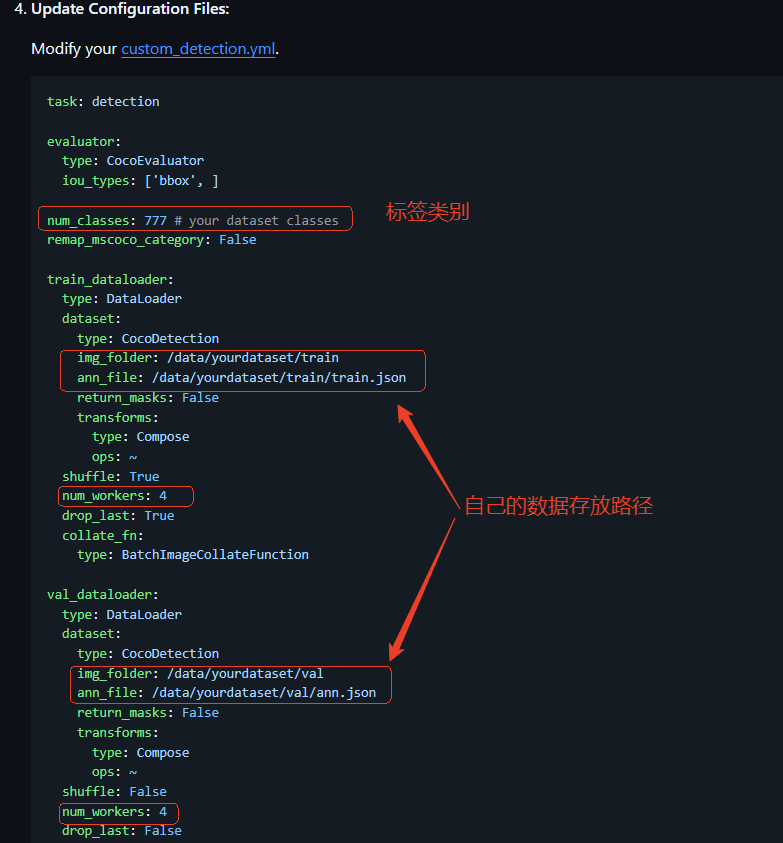
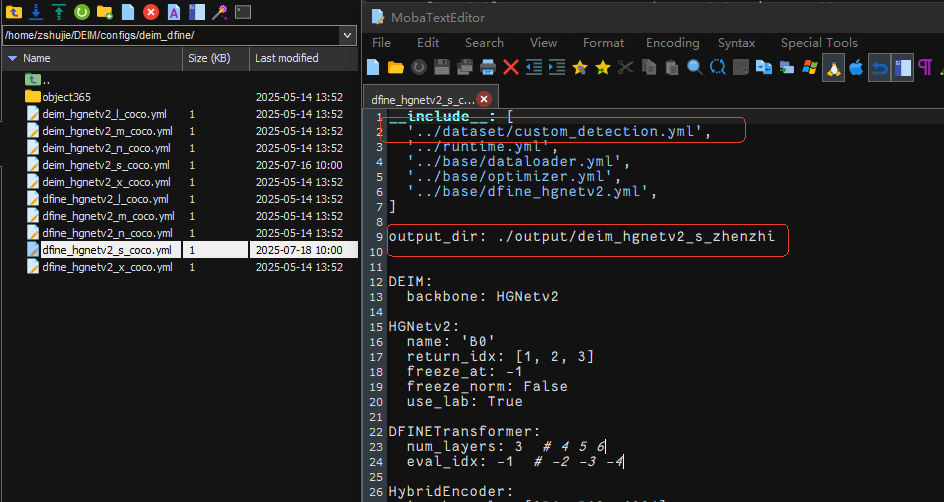
4、修改配置参数:batch_size, epochs,resize_size
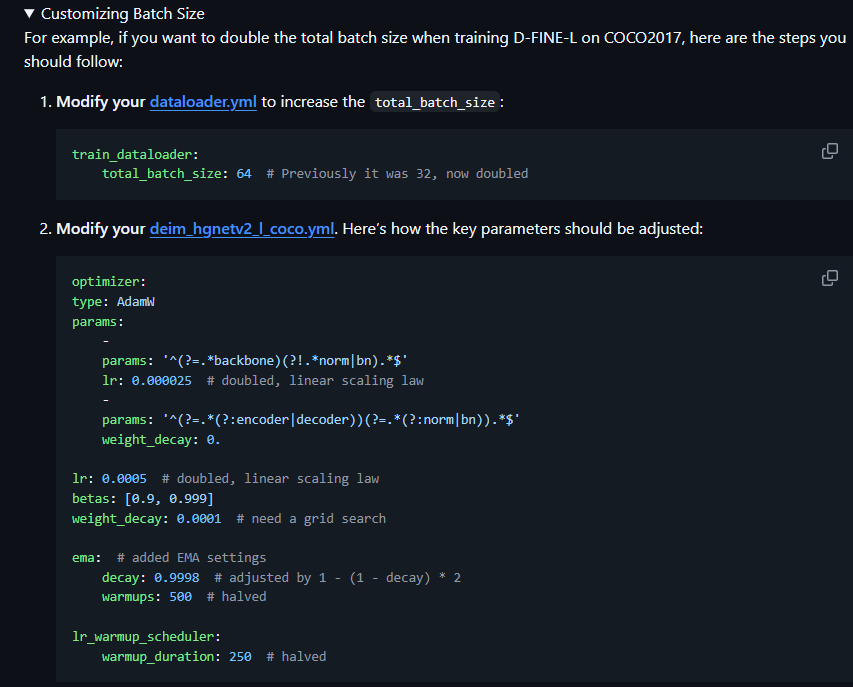
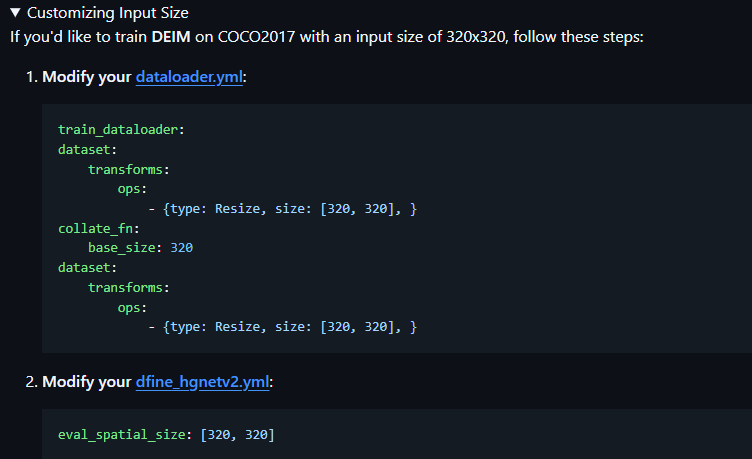
5、训练


6、推断

7、部署(onnx、tensorrt)
# 导出onnx模型
python tools/deployment/export_onnx.py --check -c configs/deim_dfine/deim_hgnetv2_${model}_coco.yml -r model.pth
# 导出tensorrt模型
trtexec --onnx=best_stg2.onnx --saveEngine=best_stg2.engine --buildOnly --minShapes=images:1x3x640x640 --optShapes=images:16x3x640x640 --maxShapes=images:32x3x640x640 --workspace=1024 --fp16
问题:
目前按照上述方法导出的onnx模型与.pt模型结果一致,tensorrt模型与onnx结果不一致,tensorrt检测框超级多,GPT分析原因可能是nms模块没有导出到tensorrt,遇到同样问题并解决的小伙伴请留言告知,感谢~
问题记录:
1、安装tensorrt之后,训练时出现下面的报错:
Could not load library libcudnn_cnn_train.so.8. Error: /usr/local/cuda-12.1/lib64/libcudnn_cnn_train.so.8: undefined symbol: _ZN5cudnn3cnn5infer22queryClusterPropertiesERPhS3_, version libcudnn_cnn_infer.so.8
原因:
具体原因是安装cuda的时候,按照教程将cudnn也安装到了系统cuda路径中,然后在python拟环境中使用pip install torch时会自动安装一个cudnn,两个发生了冲突。
解决办法
首先激活虑拟环境,使用pip list查看:

里面确实安装了cudnn,解决办法也很简单,既然产生了冲突,要么把系统里面的cudnn去掉(不推荐,如果部署其他的,如Tensorrt时会出现问题,反而更麻烦)。要么把虚拟环境中的cudnn去掉(推荐),所以只需要执行如下命令:
pip uninstall nvidia-cudnn-cu12




















 2059
2059










